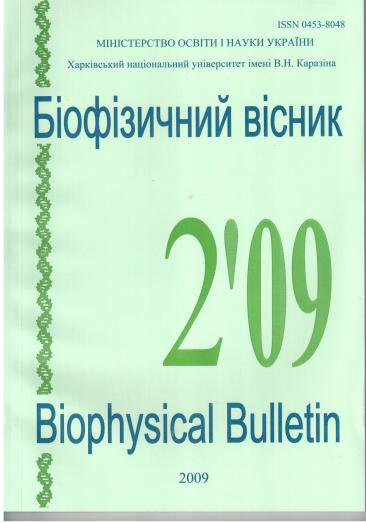Програмно-апаратний комплекс для вивчення провідності та ємності двошарових ліпідних мембран
Анотація
Вимірювання електрофізіологічних параметрів двошарових ліпідних мембран, модифікованих білками або пептидами, дозволяє встановлювати механізми іонного транспорту в біологічних мембранах на рівні поодиноких молекул. В роботі описано розроблений діючий макет експериментального устаткування для вивчення провідності та ємності модифікованих модельних двошарових ліпідних мембран. Макет є мікроконтролерною системою керування та збору даних, виготовленою з використанням сучасної елементної бази аналогової та цифрової схемотехніки. Програмне забезпечення комплексу реалізовано на асемблері мікроконтролера сімейства PIC18F4хх й налагоджували в середовищі MPLAB IDE.
Завантаження
Посилання
– 424 с.
2. Бислойные липидные мембраны. – Владивосток: Б.и., 1983. – 150 с.
3. Методы изучения мембран растительных клеток / Под ред. В.В. Полевого, Г.Б. Максимова,
Н.Ф. Синютиной. – Л.: Изд-во Ленингр. ун-та, 1986. – 192 с.
4. Сакман Б., Неер Э. Регистрация одиночных каналов. – Москва: Мир, 1987. – 447 с.
5. Hille В. Ion channels of excitable membranes. – Sunderland, Massachusetts: Sinauer Associates,
Inc., 2001. – 814 p.
6. Достал И. Операционные усилители. – М.: Мир, 1982. – 512 c.
7. Корыта И. Ионы, электроды, мембраны. – М.: Мир, 1983. – 264 с.
Автори, які публікуються у цьому журналі, погоджуються з наступними умовами:
- Автори залишають за собою право на авторство своєї роботи та передають журналу право першої публікації цієї роботи на умовах ліцензії Creative Commons Attribution License, котра дозволяє іншим особам вільно розповсюджувати опубліковану роботу з обов'язковим посиланням на авторів оригінальної роботи та першу публікацію роботи у цьому журналі.
- Автори мають право укладати самостійні додаткові угоди щодо неексклюзивного розповсюдження роботи у тому вигляді, в якому вона була опублікована цим журналом (наприклад, розміщувати роботу в електронному сховищі установи або публікувати у складі монографії), за умови збереження посилання на першу публікацію роботи у цьому журналі.
- Політика журналу дозволяє і заохочує розміщення авторами в мережі Інтернет (наприклад, у сховищах установ або на особистих веб-сайтах) рукопису роботи, як до подання цього рукопису до редакції, так і під час його редакційного опрацювання, оскільки це сприяє виникненню продуктивної наукової дискусії та позитивно позначається на оперативності та динаміці цитування опублікованої роботи (див. The Effect of Open Access).





